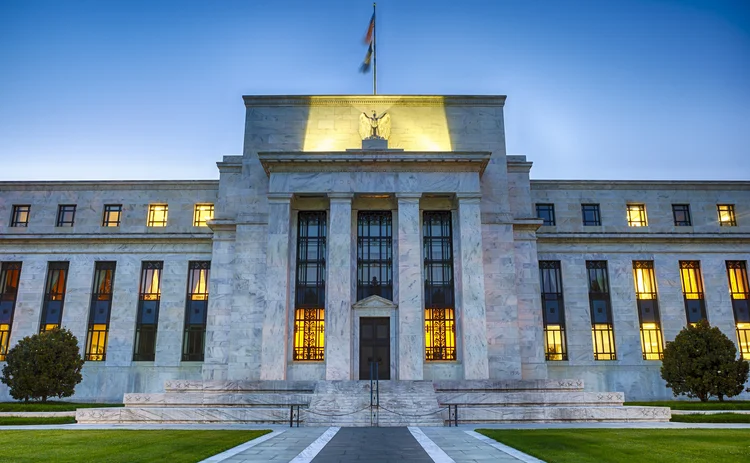
SA-CCR proposal imminent, Fed adviser says
NSFR could also be finalised before year-end; final stress capital buffer rule expected in early 2019

The Federal Reserve is placing “a high degree of priority” on finalising its capital and liquidity standards for large banks – beginning with a proposal on the standardised approach to counterparty credit risk.
“In terms of priorities for some of the reforms, I think SA-CCR is getting a high degree of priority and you should expect to see a proposal on that in the US soon,” said Norah Barger, senior adviser to the board of governors of the Federal Reserve System.
SA-CCR permeates the Basel framework to the extent that other standards can’t be finalised until it is in place. It replaces the 30-year-old current exposure method, and is intended to be more risk-sensitive, but banks say it still produces “bizarre outcomes”.
Barger was speaking at an industry conference in New York on October 4.
A proposal on the Net Stable Funding Ratio will follow SA-CCR, Barger said. The Fed received a welter of comments on the treatment of derivatives liabilities in the NSFR. The Basel Committee conceded a year ago that national regulators could lower the net stable funding requirement for derivatives liabilities from 20% to 5%, at their discretion, and Barger hinted the Fed might exercise that option.
“The issue was resolved in a way in Basel that we are hoping will allow us to go forward on that. There are comments in a few other areas that we are trying to square with the Basel standard. So that will be coming out after the SA-CCR proposal. I can’t tell you how closely after that,” said Barger.
The Basel Committee on October 4 published a monitoring report that found the vast majority of banks were compliant with the liquidity risk measure.
Finalising the stress capital buffer, which was proposed in April, is another priority. A final rule can be expected in the first half of 2019, Barger said.
The Fed’s efforts to complete the bank capital framework have been delayed by the Economic Growth, Regulatory Relief and Consumer Protection Act (S2155).
“We have the Crapo legislation with the emphasis on tailoring; there is a legislative mandate associated with that. It has been taking up a lot of energy in order to meet those deadlines,” Barger said.
Since Fed staff are already working on the Crapo-mandated tailoring, they will simultaneously work to tailor rules for the foreign banks, she added.
“The Crapo bill, in terms of the tailoring it mandates, does not mention foreign banks operating in the US. But if you tailor operations for domestic banks, that does raise issues with the foreign banks, and we are working in parallel to try to do something for the foreign banks that will leverage what we are doing with the domestic banks. It’s a bit more complicated and there is no legislative mandate. We will be looking to issue a proposal for that not long after the domestic proposals, and you may see them together.”
Only users who have a paid subscription or are part of a corporate subscription are able to print or copy content.
To access these options, along with all other subscription benefits, please contact info@risk.net or view our subscription options here: http://subscriptions.risk.net/subscribe
You are currently unable to print this content. Please contact info@risk.net to find out more.
You are currently unable to copy this content. Please contact info@risk.net to find out more.
Copyright Infopro Digital Limited. All rights reserved.
As outlined in our terms and conditions, https://www.infopro-digital.com/terms-and-conditions/subscriptions/ (point 2.4), printing is limited to a single copy.
If you would like to purchase additional rights please email info@risk.net
Copyright Infopro Digital Limited. All rights reserved.
You may share this content using our article tools. As outlined in our terms and conditions, https://www.infopro-digital.com/terms-and-conditions/subscriptions/ (clause 2.4), an Authorised User may only make one copy of the materials for their own personal use. You must also comply with the restrictions in clause 2.5.
If you would like to purchase additional rights please email info@risk.net
More on Regulation
Swiss report fingers Finma on Credit Suisse capital ratio
Parliament says bank would have breached minimum requirements in 2022 without regulatory filter
‘It’s not EU’: Do government bond spreads spell eurozone break-up?
Divergence between EGB yields is in the EU’s make-up; only a shared risk architecture can reunite them
CFTC weighs third-party risk rules for CCPs
Clearing houses could be required to formally identify and monitor critical vendors
Why there is no fence in effective regulatory relationships
A chief risk officer and former bank supervisor says regulators and regulated are on the same side
Snap! Derivatives reports decouple after Emir Refit shake-up
Counterparties find new rules have led to worse data quality, threatening regulators’ oversight of systemic risk
Critics warn against softening risk transfer rules for insurers
Proposal to cut capital for unfunded protection of loan books would create systemic risk, investors say
Barr defends easing of Basel III endgame proposal
Fed’s top regulator says he will stay and finish the package, is comfortable with capital impact
Bank of England to review UK clearing rules
Broader collateral set and greater margin transparency could be adopted from Emir 3.0, but not active accounts requirement







